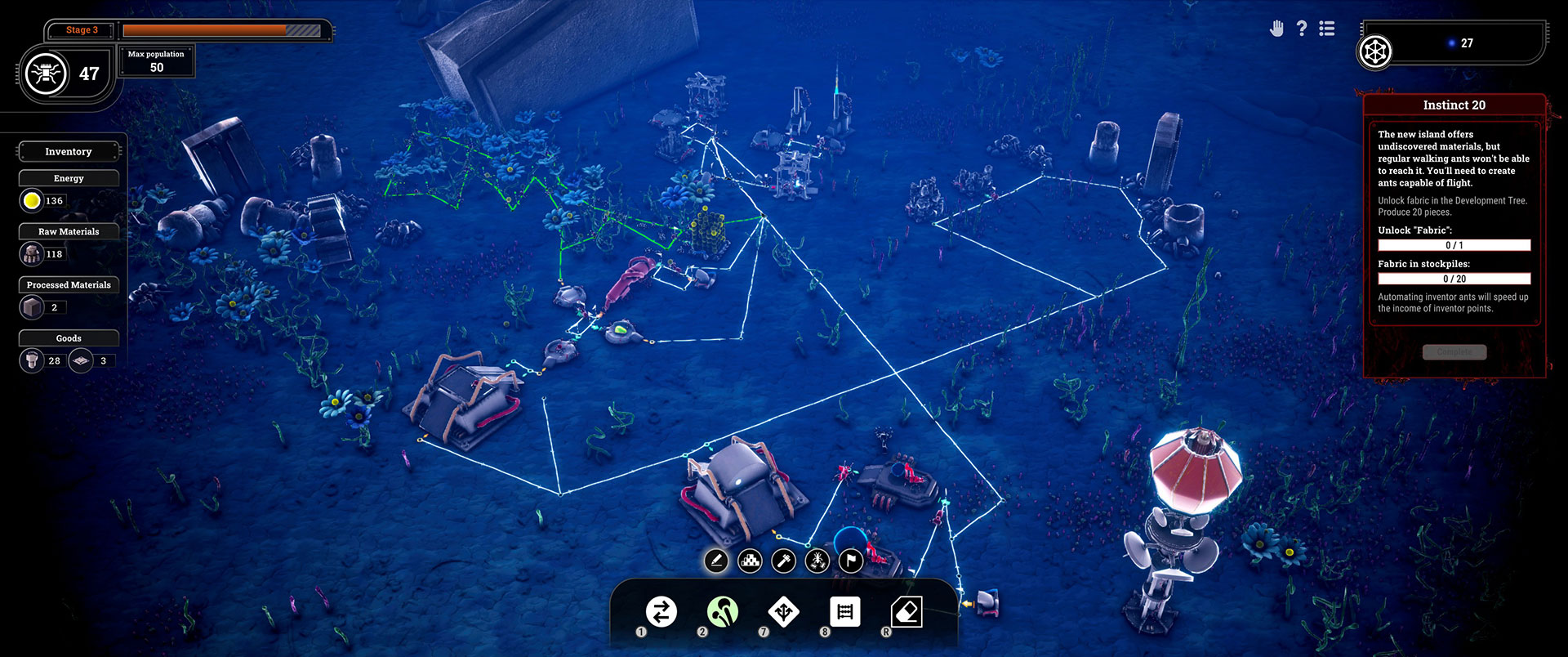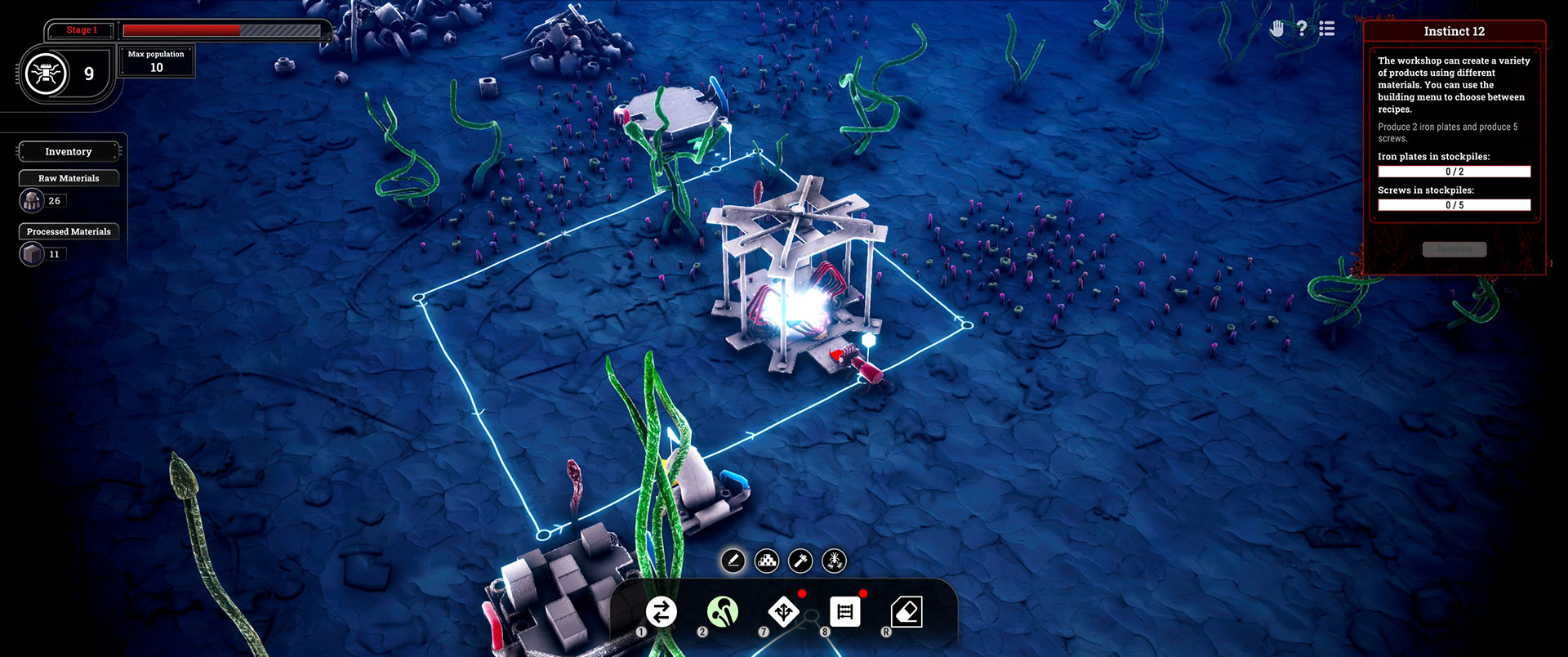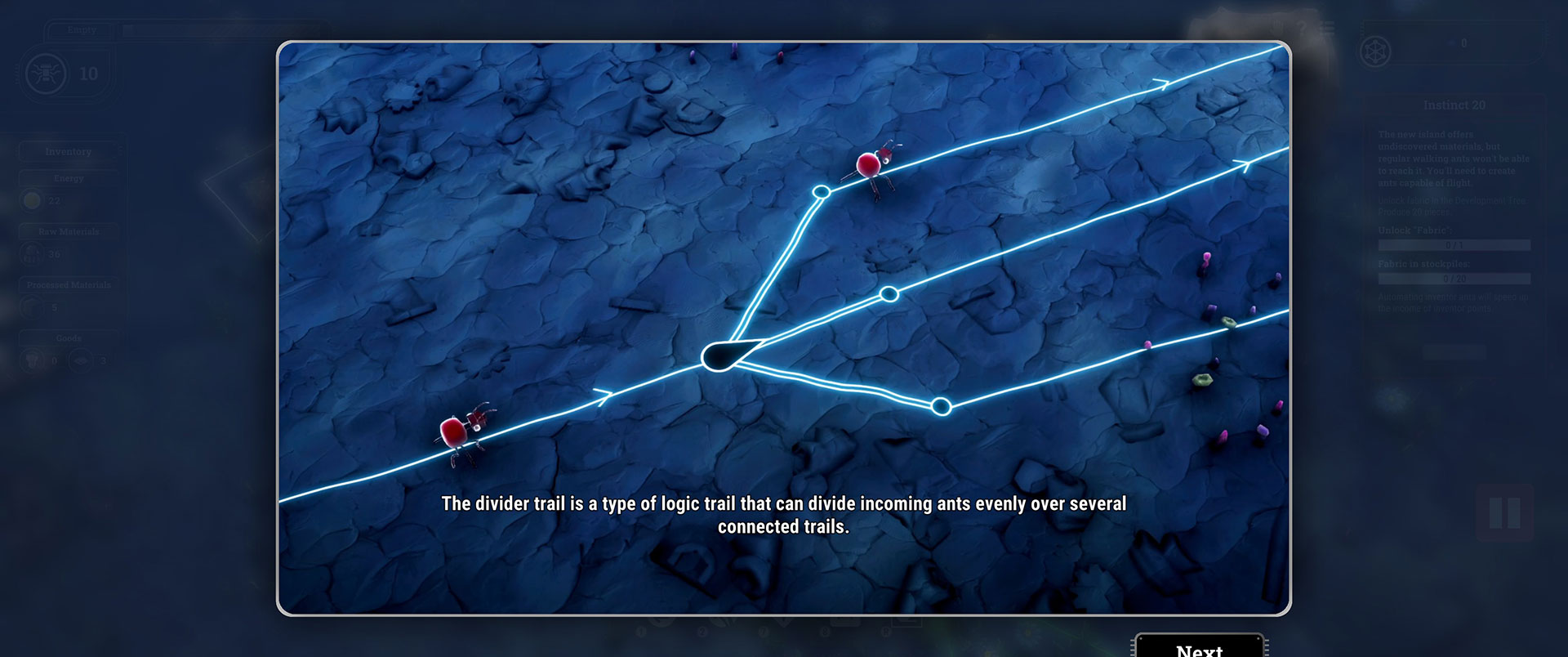With the growing popularity of games such as Factorio and Satisfactory, it is no surprise that indie developers are putting their own spin on the genre. One such title is Microtopia from Cordyceps Collective, launching into Early Access on February 18, 2025. Having spent hundreds of hours playing automation games over the years, I was intrigued by Microtopia’s premise. Instead of creating a factory, players are in charge of a robotic ant colony where they will have to create, automate, and optimize supply chains for their ants to follow. If you’ve played Factorio or Satisfactory, imagine your conveyor belts coming to life as robotic ants—with a limited lifespan. That twist significantly changes your approach to the game. I also found similarities with RTS games, like Warcraft and StarCraft, where optimizing your economy is crucial before expanding your base.
Microtopia revolves around drawing paths for your ants, with different types dictating their tasks. For example, hauling paths will tell the ants to pick up and drop off resources, while foraging paths direct them to gather certain items from nearby plants. Since the game does not rely on conveyor belts for transporting resources from one place to another, the paths can become quite complex as you work toward automation. This is where another major focus of the game, logic, comes into play. Microtopia provides you with a wealth of tools ranging from dividers to logic gates, allowing you to decide how you want to tackle the automation puzzle.

Each playthrough starts with deploying the queen, which will be in charge of producing larvae so more ants can be added to the colony. To produce larvae, you’ll need ants on a foraging path to gather energy for the queen. Those larvae can then be converted to ants, which can be put on a path to work, or combined with other ants to new ones that live longer or have specialty functions, such as drones that can fly and travel to other islands. There’s a surprising amount of depth to the game, and while I haven’t had enough time to unlock everything it currently has to offer, I can already get a good sense of what’s possible just by viewing the tech tree.
Once you establish basic automation where larvae are being produced and your colony is growing to dozens of ants, you’ll focus on unlocking new technologies to progress. This is where the game became overwhelming, as unlocking new ants and islands requires more micromanagement. You may need to overhaul existing lines to accommodate new ants and resources, which can feel tedious. Unlike Factorio or Satisfactory, where sometimes the easiest solution is to create an entirely new assembly line, Microtopia pushes the use of logic to optimize what’s already existing while building upon it.

These variables really do deliver a fresh take on the genre, since there’s also a focus on the basic economy of keeping the queen fed with energy. The population of the colony is dictated by how frequently the queen consumes energy, and letting that drop off means fewer and fewer workers in the colony. If you’re not paying attention, this can be frustrating, as foraged energy takes time to respawn. In other words, you can’t just brute force it because eventually your ants will be traveling on a path with nothing to collect. This gets even more complicated since energy is also used for inventor ants, which help unlock more tech.
The game, however, does simplify some things compared to Factorio or Satisfactory. For example, there’s the ability to place dispensers for storage, allowing ants to retrieve items remotely from within range. This makes it convenient to set up new assembly lines, which is also necessary since many of the resources are finite. Microtopia guides players with a structured tutorial, but once it opens up, there’s a lot to figure out on your own. I found myself learning from my mistakes throughout my experience, and in some cases, this meant redoing my entire base so everything was neatly organized and efficient.

While I have only spent about a dozen hours with Microtopia so far, I’m looking forward to seeing how the developers approach Early Access. The tech tree offers plenty of depth, but balance improvements are needed. I found myself at times struggling with energy upkeep as I grew my colony, and having the colony’s population depend on that one aspect can be frustrating. Tweaking population values—like increasing the initial tier from 10 to 20—could ease this frustration. For those who found themselves wishing Factorio or Satisfactory had a bigger focus on logistics, Microtopia might scratch that itch for you.
Overall, the foundation for a solid automation sim-building game is there in Microtopia, and Early Access will dictate just how wide of an audience it can reach. The game’s UI could use some polishing, and I do wish grid building were unlocked at the start. But the freedom of drawing paths instead of rigid conveyor belts really does open up an entirely new world of possibilities for the automation genre. Combined with the limited lifespan for most of the ants, players will undoubtedly find themselves rethinking how to set everything up. Microtopia also has a free demo in the form of Microtopia: Prologue if you’re interested in checking it out before spending any money.
Microtopia launches into Early Access on February 18, 2025 on PC. These first impressions are based on a retail code provided by JF Games PR Comms on PC. While FullCleared does have affiliate partnerships, they do not influence our editorial content. We may, however, earn commissions for products purchased via affiliate links.















